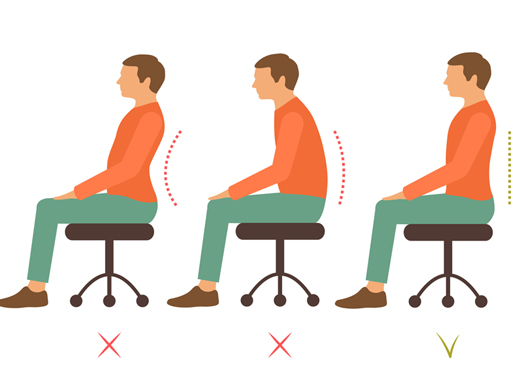2 Key cues
Below are examples of some of the most common ‘key cues’ and how they can be perceived by others. It will be useful to keep in mind that they may relate to your own perceptions of others as well as theirs of you.
1 Crossed arms and legs
Perhaps among the most obvious key cues is crossed (or folded) arms and legs. Although they may indicate that an individual is feeling insecure or defensive, they present a ‘physical barrier’ that the other party could perceive as resistance to their ideas:
Psychologically, crossed legs or arms signal that a person is mentally, emotionally, and physically blocked off from what’s in front of them.
Imagine if you were in a meeting or having a conversation with someone. How would you feel if the person you were talking to adopted a crossed arms and crossed legs position?
Avoiding this type of body language can help to demonstrate that you are interested in the conversation or meeting. It could also help with the flow of the discussion.
Useful note: Legs crossed at the ankle could demonstrate a more relaxed approach.
2 Posture
Your posture, or the way you hold yourself, is critical to the way you are perceived by others.
- Standing or sitting tall with your shoulders back can demonstrate power and confidence, as in Figure 3.
- Slouching can indicate boredom or a lack of confidence.
- Leaning in towards someone can demonstrate interest in what they are saying.
However, be careful not too lean in too close when talking to a colleague. Cultural norms vary but it is important to be aware that keeping appropriate distances will prevent people from feeling uncomfortable.
3 Gestures
The way that you or others use hands and arms during conversations can impact on the message being delivered. For example, politicians often use their hands when delivering speeches to stress specific points. Researchers in this field suggest that this adds impact and these visual cues help to better deliver the message.
However, if your hands and arms are moving wildly while you are trying to explain something, this can be a distraction and is best minimised.
Handshakes are an important gesture when it comes to making a good first impression. In 2015, Front of House Recruitment conducted a study of recruiters who perceived a weak handshake as reflecting a lack of enthusiasm and confidence (Morrissy-Swan, 2018). To help you prepare a firm handshake, it is useful to practice with friends or family.
Be considerate of those whose cultural views do not permit this however, as well as those with pre-existing conditions who may not wish to shake hands.
4 Mirroring
Mirroring occurs when one party copies some of the body language presented by the other party. Examples include actions such as smiling and leaning forward. It is something that we do unconsciously and can help to break down some barriers.
Being aware of the other party mirroring you is helpful as it tells you that the other person is interested in what you are saying and could help to create a more positive interaction.
5 Eyes
Have you ever been in a situation where someone has avoided eye contact with you? How did this make you feel? Eye contact is a very important non-verbal communication skill, particularly in the West.
People who avoid making eye contact may be perceived as untrustworthy or shy, although too much eye contact can be unnerving for the other party. It is important to strike a balance.
It is useful to note that in some cultures eye contact can appear to be disrespectful, therefore if you do meet people from other cultures as part of your work, it will be helpful to understand what the protocols are beforehand. You’ll explore cultural diversity and communication further in Week 7.
6 Facial expressions
The facial expressions of the person you are communicating with will help you to be aware of whether they have understood what you are saying.
For example, slightly raised eyebrows and a smile can indicate approval, whereas unconscious nodding of the head or frowning could demonstrate that the other party is distracted by other thoughts and possibly not listening.
7 Dress code
Most people will make judgements about individuals based on what they are wearing, so the way that you dress can also have an impact on the messages you deliver.
This is especially true at interviews, where it is vital to present a positive image.
Activity 2 Examining non-verbal communication
Test what you have learned by observing the non-verbal cues of two different people. They could be colleagues, family, friends or even public figures. You can do this in one of two ways:
- make some notes while you are observing the person (either in person or on a video clip)
- make a list beforehand and tick off what you observe.
If you undertake this observation in person with someone you know, it might be helpful to explain what you are doing!
Discussion
How did you find this activity? Were you surprised at how many cues you noticed? Did it give you a different impression of your colleague/friend/family member?


